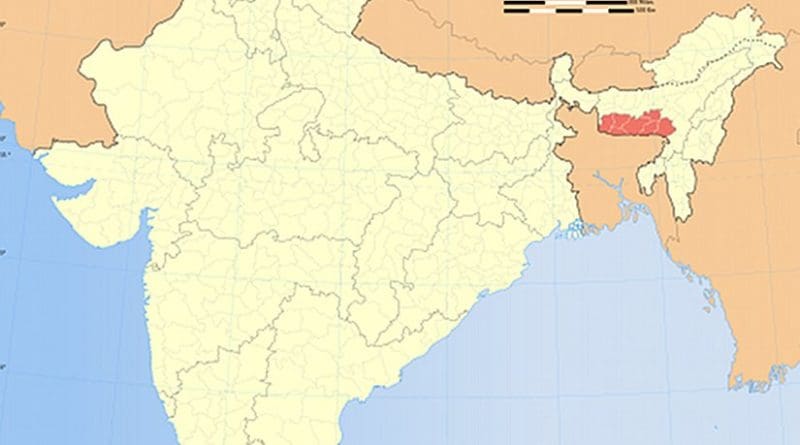Meghalaya: The High Court Push For Army Act – Analysis
By IPCS
By Wasbir Hussain*
The government of Meghalaya’s failure to protect civil liberties in the Garo Hills region has forced the state’s High Court to issue a directive to the Centre, asking it to consider enforcing the Armed Forces (Special Powers) Act (AFSPA) to tackle lawlessness arising out of kidnappings, killings and extortions by militants in the area. The judiciary being forced to step in to compel the government to initiate tough measures to protect life and property of citizens is something unprecedented.
The Meghalaya High Court’s directive comes at a time when there are continuing protests in India’s Northeast and elsewhere against the alleged high-handedness by the armed forces in the name of tackling insurgency. The charge is that the army can afford to commit excesses because they get enough immunity in accordance with the provisions of the stringent AFSPA.
The directive clearly indicates that people are frustrated and angry at the failure of the state government in taming the insurgents or towards keeping a check the depredations they cause. For instance, while directing the Centre to consider using the AFSPA to deploy the Army and the paramilitary, the Court says the forces must be out to aid the local civil and police, but must not be put under their command until normality is restored. There are reasons for the Court to turn so stern.
Statistics furnished to the Court by the Meghalaya Government shows that between January-October 2015, insurgents had abducted 87 people in Garo Hills primarily for ransom. This includes 27 businessmen, 25 private sector employees, five government employees, and five teachers. The Block Development Officer (BDO) of Chokpot in South Garo Hills district, a Meghalaya Civil Services officer, was released on 03 November 2015 after a week in captivity of the dreaded Garo National Liberation Army (GNLA). An Intelligence Bureau official too was kidnapped and killed in the area in recent weeks.
This unusual Court directive has not come overnight. The GNLA has crossed all limits of violence attributed to insurgents in the Northeast. For example, the rebel group made the region witness the first Taliban-style execution on 03 June 2014. Five GNLA militants armed with AK 47 rifles barged into a family’s home in a remote village of Raja Goera Rongat, near Chokpot, in South Garo Hills district. They locked the father in a room, and, according to the police, tried to molest and rape the mother. When she resisted, two of the five rebels opened burst fire on her from point-blank range, in front of her four children, all minors, killing her on the spot. “Her head was almost blown off her body by the impact of the gun shots,” a police officer had said.
It is the brutality of the crime that has made people compare the killing to assassinations carried out by the medieval Taliban in Afghanistan. And yes, a defiant GNLA claimed responsibility for the cowardly killing claiming the woman was a police informer. A GNLA statement at the time said she was ‘responsible’ for the death of the outfit’s training instructor named Kram. The man was killed in an encounter with security forces in the first week of May 2014. One is aware of the treacherous terrain of the Garo Hills and the region’s proximity to Bangladesh. However, what is surprising is the inability of the police and the paramilitary in checking the activities of the GNLA that is officially stated to have fewer than 300 members. If the GNLA’s terror run cannot be controlled by Meghalaya Police units like the SWAT (Special Weapons and Tactics Team) – who were trained by the Indo Tibetan Border Police – or the specialised CRPF units, then we would be forced to conclude that the counter-insurgency strategy in the area requires a drastic review or overhaul. Army operations to neutralise the GNLA is the ‘last option’, and with the recent Court directive, the government may be forced to use it.
The Meghalaya government has a lot to answer as to why it has failed to achieve results in the operations against the trigger-happy GNLA. The Court appears to mean real business and has also directed the Union Home Secretary to place the matter before the Centre besides asking the Principal Secretary at the Prime Minister’s office to bring the matter to the Prime Minister’s notice. However, the real need of the hour is to take stock of the measures undertaken by the security establishment to deal with the situation over the past months. Questions also arise about the end-use of the funds allocated by the Centre for police modernisation, which includes training and weapons upgradation.
Furthermore, if there is to be a probe ever, one of the aspects that must be looked into on whether or not there has been a politician-militant nexus in the Garo Hills like several other regions in the Northeast. Answers may not be forthcoming, but questions will have to be raised again and again to ascertain the truth.
One hopes, the political class in Meghalaya does not decide to sing the ‘we-are-ready-for-talks’ line as a strategy to tackle the situation. For its part, the Centre has already indicated that it could move the Supreme Court against the Meghalaya High Court directive with sections in the security establishment saying the situation in the Garo Hills is ‘not serious’ enough to warrant the deployment of the Army.
This section maintains the State Government is fully competent to deal with the ‘local’ law and order situation. The apex court’s verdict, if it has to take up the issue, will be interesting.
* Wasbir Hussain
Executive Director, Centre for Development & Peace Studies, Guwahati, and Visiting Fellow, IPCS

